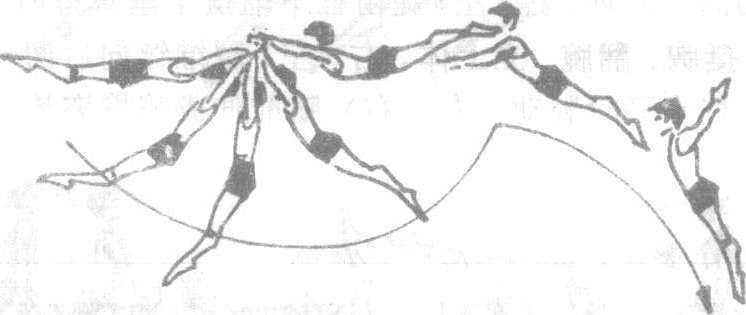悬垂摆动后摆下
高杠悬垂后摆时,借助制动腿和手压杠,使身体向后挺身跳下的动作。动作要领:由前摆极点开始。后摆身体过垂直部位后,两腿用力向后甩。接近极点时,制动腿,同时直臂压杠、抬上体、推杠放手,保持挺身姿势腾空、落下。保护与帮助:保护者站在杠后侧方,一手托腹,一手扶背部,防止脱手。教学重点:小摆动后摆下,体会制动腿、压杠、放手的配合技术。然后在保护下做完整动作。

悬垂摆动后摆下
悬垂摆动后摆下Xuanchui baidong houbaixia
由悬垂摆动开始,借助后摆制动和臂压杠的力量,使身体在杠后挺身腾起落地。是单杠基本下法。是培养练习者时空感觉和勇敢、果断品质的有效手段。
动作要领 由悬垂摆动开始,当后摆至杠前45°时,微收髋、含胸、沉肩,摆过杠垂直位时,向后上方用力甩腿,身体保持挺身姿势。当后摆至极点时,迅速制动。直臂压杠、顶肩推杠、挺胸、挺身,使身体腾起挺身落地。

保护与帮助 保护者站在练习者杠后侧位置,当后摆至身体腾空时,迅速插上,一手扶腹,一手扶腰,帮助控制身体平衡平稳落地。
教学重点 ❶抓好悬垂摆动的“鞭打”技术,掌握用力时机。
❷后摆至杠面平齐时,注意直臂压杠,顶肩推杠放手,切忌屈腿、收腹含胸和放手早。